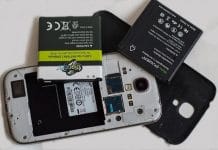
Lithium batteries use metallic lithium as an anode. These type of batteries are also popularly known as the lithium metal cells. Lithium batteries are commonly used in electronic gadgets, electric vehicles, and remote controlled toys. Since it is used widely, it will be better to know the lithium-ion battery charging best practices.
What are the best charging practices for a lithium-ion battery? There are many ways to keep and prolong the life of lithium-ion batteries. One of the best practices known to extend its battery life is to store it on room temperature. We all know that extreme weather condition affects battery life, and this includes the lithium-ion battery.
Lithium-ion batteries are often neglected because of its small size. However, we should never underestimate the power of a lithium-ion battery. It can provide power for an electronically controlled vehicle like golf carts.
Therefore, it is equally important to care for your lithium-ion batteries the same way you care for a regular car battery. Lithium or not, the care and maintenance must be the same.
4 Tips On How To Charge Your Lithium-Ion Battery Properly
Knowing these simple tips for properly charging your lithium-ion batteries will take a long way. You will be able to prolong the usage of these battery type.
1. Trickle Charge
A Li-ion battery reaches full charge when the current drops to a set level. If you are using a trickle charge, most chargers uses topping when the level of current drops. The complete charging time will take about 2 to 3 hours.
Battery manufacturers usually recommend charging it at .08 C or even less to extend the life of the battery. Some Li-ion cells may reach a reading temperature of about 5 degrees C when it becomes fully charged. It is because of the protection circuit. If the battery temperature rises more than 10 degrees C, you must stop charging the battery.
2. Full Charge
Li-ion battery reaches full charge when it reaches the voltage threshold when the current reading registers at 3% of the current rate. You may also consider it as a full charge when the current levels are off and cannot go down any further.
3. Partial and not full charge is required
Unlike lead-acid batteries where it needs a 100% complete charging, a Li-ion battery does not need it. It is not advisable to fully charge this type of cell.
The high voltage or high flow of current causes too much stress on the batteries. Choosing a low voltage rate is highly recommended for a Li-ion battery.
It is not advisable for this kind of battery to reach stage 2 or the saturation stage. The state of charge (SOC) for step 1 reaches only 85% charge and it is the most recommended level for Li-ion charging.
4. No overcharging for Li-ion batteries
Do not attempt to overcharge a lithium-ion battery. Once it reaches full charge, you must cut it off immediately. Doing these may cause a metallic lithium plating. It may compromise safety when you fail to cut off the charging process.
When you turn-off the charger, it automatically drops the voltage and reduces the stress on the battery. To sum up, the charging process for Li-ion cells. Take time to read these simple guidelines or rules in charging a Li-ion battery.
Simple Rules for Charging Li-ion Batteries
These simple guidelines are a summary of what we have discussed in details. This steps will remind you of the right way of charging your Li-ion battery for a longer lifespan.
● Always disconnect the charger after getting 85% of charge. Parasitic charging can damage the cell.
● Choose the right room temperature when charging. Avoid too hot or too cold temperature.
● Observe partial charging only.
● Stop charging when the battery gets hot.
● Charge the battery before storing it.
Is It Ok To Leave A Lithium-Ion Battery On The Charger When I Sleep?
To answer this question directly, it is not advisable to leave your Li-ion battery charging overnight. As I have mentioned, Li-ion only needs partial load. You were overcharging it when you leave it on the charger overnight. It may damage your batteries if you always overcharge it.
Learn More: Is It Ok to Leave a Lithium Ion Battery On the Charger?
Is It Bad To Fully Discharge A Lithium-Ion Battery?
Yes, it will cause harm and damage to a Li-ion battery. A fully discharged battery can easily catch fire or explode when you recharge it. Do not wait till the array is empty before recharging it.
Is There Any Special Charger To Charge My Lithium Ion Battery?
Yes, you should use a recommended charger to charge a Li-ion battery. There is a special charger for lithium batteries. A charger that can detect battery chemistry is best to use.
It is essential to have a special charger for these type of cells because it can quickly explode or cause a fire when wrong charging is applied.
I Recommend 12 Volt Lithium-Ion Battery Charger And Here Is Why
● It has a built-in protection system. These battery chargers have an inverter system that remotely controls the settings of the charging process.
● It has no memory or zero memory. Smart batteries have a 99.99% efficiency method. It also has no memory. Therefore, you can drain the battery and recharge it at any depth.
You Can Buy BikeMaster Lithium Battery Charger On Amazon
BikeMaster chargers are the best Li-ion battery charger to use for your Li-ion batteries. If you are using an advanced technologically designed lithium battery, then I highly recommend BikeMaster charger.
This charger is specially designed for charging hi-powered Li-ion batteries. It is built with a circuit protection guard.
Pros:
● It is made for charging and maintaining Li-ion batteries.
● It has a built-in circuit protection guard.
● You can use it with a Lithium Iron Phosphate battery.
Cons:
● It does not come with an installed lead.
● You cannot use it as a jumpstarter.
Specifications:
Brand: BikeMaster
Model: BikeMaster Lithium Battery Charger
Weight: 1.3 lbs.
Product Dimensions: 9 x 5.5 x 4 inches
Ways To Charge A Lithium-Ion Battery Without Charger
Yes, there are specific ways you can charge your Li-ion batteries without the charger. This process is not some kind of magic, but you can charge your Li-ion batteries without using your charger.
A USB cable can be used for charging Li-ion batteries. If you lost your charger and you need to charge your lithium batteries immediately, you can use your USB cable and connect it to your pc. The charging output of a USB is very adaptable to the charging condition of Li-ion batteries.
Here are the steps and procedure in using the USB as your charging device.
1. Check out your device or gadgets that use Li-ion batteries. Most of these gadgets have USB ports.
2. Connect one end on the device’s USB port and the other end on the PC socket. Make sure that the Li-ion battery is inserted in the machine.
3. Turn on your computer to start charging your battery. Your gadget will tell you if the charge is full.
If you are interested in learning about this specific topic, then go here!
How To Maintain And Extend The Battery Lifespan Of Lithium Ion
Lithium-ion batteries are commonly used in smartphones, tablets, and other electronic gadgets. These devices are used more frequently. Thus batteries deplete faster than different types of cells. There are ways to prolong the lifespan of a Li-ion battery.
1. Know how your gadgets and devices degrade.
Your battery degrades with every full cycle charge. Cycle charge is the charge and discharge of a cell. Try to limit the cycle charging. Doing more than one cycle a day can reduce the lifespan of your battery.
2. Maintain the right temperature.
With every battery types, this condition is so real. Too hot or too cold will be bad for your battery, be it a lead-acid or Li-ion battery type.
3. No fast charging.
Li-ion battery works and performs better with a low and slow charging process. Fast charging can raise the volume of current to the battery which can stress it out and cause damage and harm.
4. Avoid draining your battery to zero.
Completely exhausting your cells is not safe for your cells. Li-ion batteries are highly sensitive and can explode when you recharge it. As soon as it drops to 50% battery capacity, restore it right away.
5. Always aim for a 50% charge before storing away your gadgets.
Avoid storing any Li-ion powered devices below 50% charge. Always provide a 50% storage charge for your devices to make it work longer.
6. Reduce screen brightness.
Screen brightness consumes much of your battery power. Reduce it considerably to save up the energy of your battery.
7. Lessen your screen time-out.
Your gadget’s screen has a time out which automatically turn off when you are not using it. Reduce the time-out to 30 seconds or less instead of letting it stand by for 2 minutes.
8. Delete Facebook.
Many will contradict this idea, but if you want to save your battery life, deleting FB on your phone will do you more good than harm. If this can’t be done, at least turn off the auto play mode for videos and other notifications.
These are simple and easy steps to help you prolong your battery. Lithium battery charging best practices should be observed well to ensure that you can have your battery life for a more extended period.





